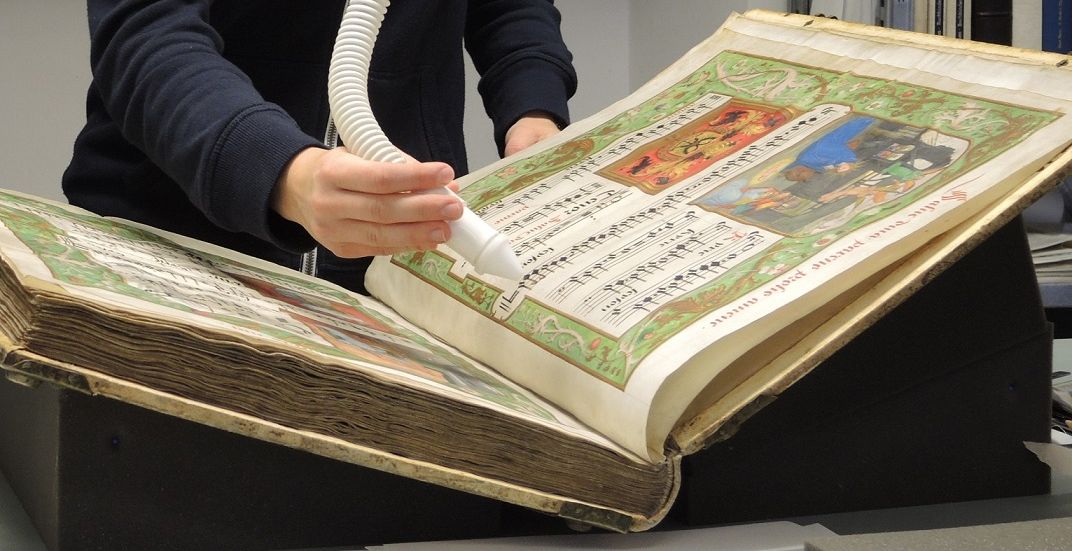Securing historical book holdings for the long term

The books in the Austrian National Library are valuable contemporary witnesses that have survived for centuries. They provide us with an insight into the history, science and arts of bygone eras. We mainly owe our thanks here to the fact that manuscripts and old prints from the 11th up to the 17th century were made of high-quality materials: hand-made paper, parchment, naturally tanned leather and well-processed wooden boards were used.
Nevertheless, damage may have occurred as a result of improper storage and incorrect use in earlier times. Our task at the Institute for Restoration is to ensure usability in such a way that the existing damage (in case of careful use) does not lead to further impairments. The principle of preservation is not “to make new from old” but rather: the object should be kept in its historically natural state.
Preserve and at the same time maintain the functionality of the book
Particularly interesting and challenging when restoring historical books: they are both works of art and objects of use. It must be possible to open and leaf through the book! The aim is to restore the functionality of the object with the least amount of intervention possible. The way they are stored also plays a key role in preserving these unique contemporary witnesses. Together with the departments and building services, the Institute for Restoration ensures that
- the books are positioned properly on the shelves,
- the depots are properly air conditioned
- ageing-resistance materials are used for protective packaging
- damage caused by external influences such as insects, dust or contaminants is prevented through regular monitoring.
Institute for Restoration focuses on prevention
Damage to our unique holdings of historical writings can often be largely avoided through these preventative measures – and raising awareness among employees and readers at the same time for handling our objects with care.
